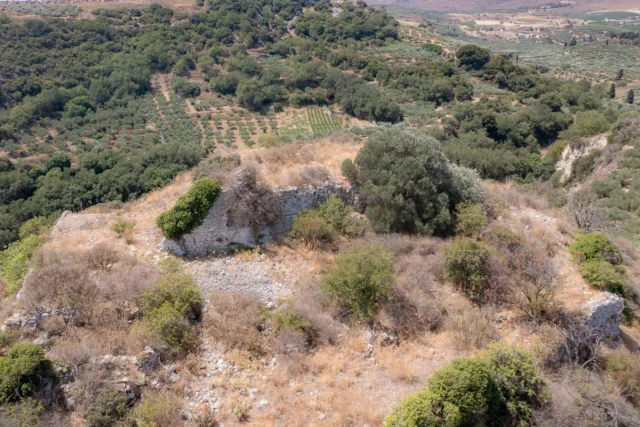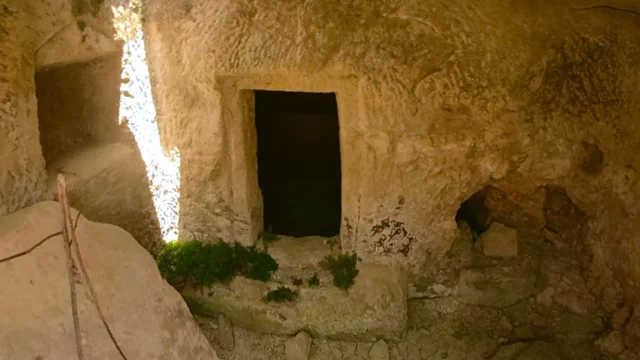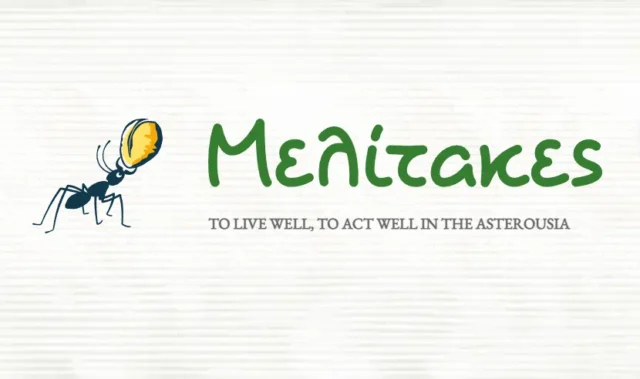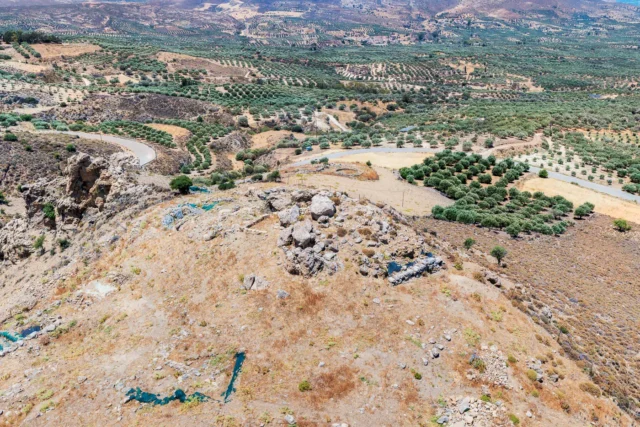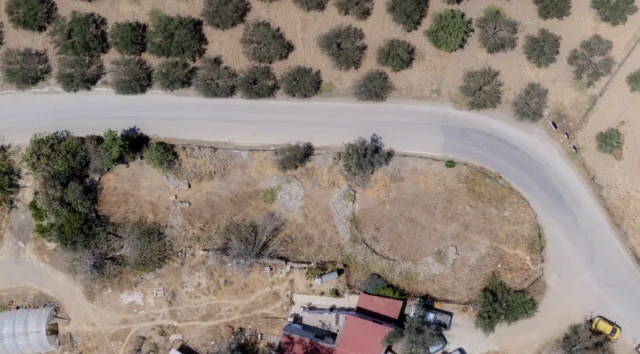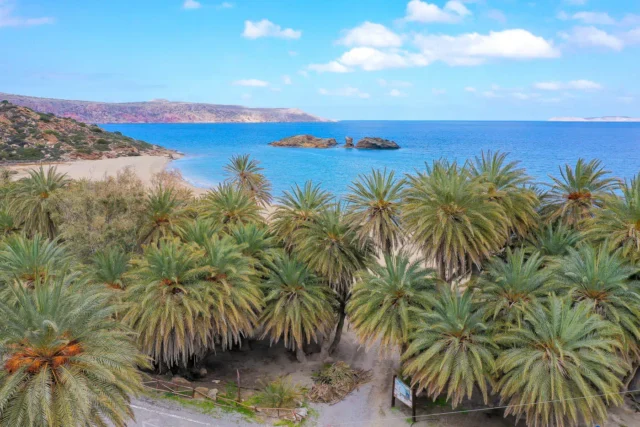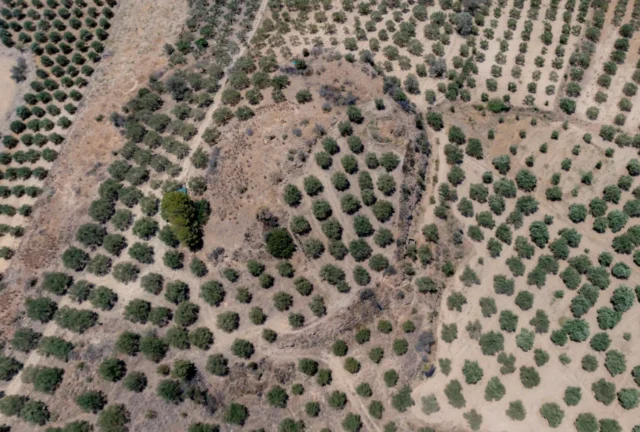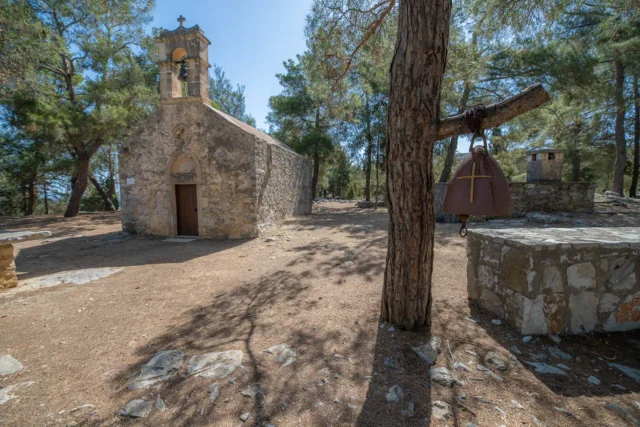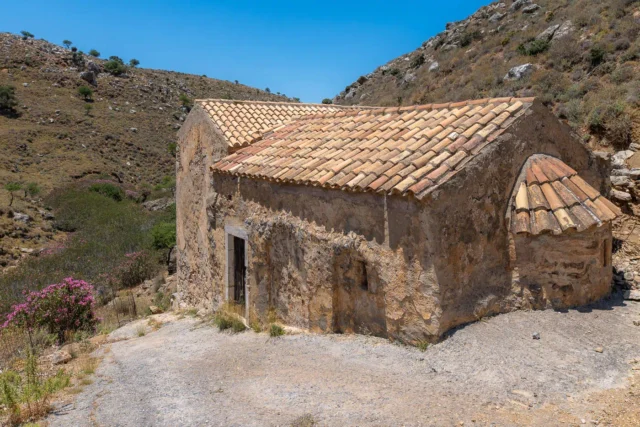829
listings found
Categories
Active filters:
Margarites tholos tomb
Late Minoan Tholos Tomb at Margarites, Mylopotamos During the winter of 1996-1997, a significant Late Minoan III period tholos tomb was excavated on the property of M. Papadakis, in the […]
Melesses fortress
The Melesses Fortress, located east of Melesses village in Heraklion, Crete, represents a Byzantine-era stronghold. Its hilltop location provided strategic defense and control of a vital trade route. Architectural ruins reveal stone walls, a central tower, and evidence of earlier Hellenistic occupation. Constructed during the 9th-10th centuries to protect Crete from Arab raids, the fortress highlights Byzantine military and social structures. Its strategic significance is underscored by its proximity to the Karteros River and its role in Crete's defense network. Studies indicate its economic importance in regulating trade between the coast and inland plains. The site's history reflects Crete's complex past and its resilience during the Byzantine period.
Panagia Mavridiani in Meronas
Panagia Mavridiani, or Church of the Nativity of Mary, stands near Meronas, Crete, with origins in the 13th century, expanded in the 15th and 16th. The church features two aisles; the older, 13th-century section displays Byzantine architecture with a domed, single-nave design and 13th-century fresco remnants. The northern aisle, dedicated to Saints Constantine and Helen, was added in the 16th century. Frescoes, though partially lost, portray scenes like the Nativity of Mary, Annunciation, Ascension, and Second Coming, alongside saints such as Gregory, Romanos, and Panteleimon. Restored in 2012, it is a testament to Byzantine artistic and religious heritage.
Meronas
Meronas, in Rethymno's Amari valley, features a rich history from antiquity to Ottoman rule. Notable are Byzantine churches with 14th-16th century frescoes, a Venetian-era tower, and the 19th-century Koules. The village's cultural association preserves traditions with events like Carnival, Easter celebrations, and music schools. Historical records date to 1301, with population fluctuations noted from the 16th to 21st centuries. The village includes the churches of Assumption of the Virgin Mary, Panagia Mavridiani, and Saint Panteleimon, showcasing varied architectural and artistic periods.
Galatas Minoan Palace
Located on Galatas Kephala in central Crete's Pediada region, this significant Minoan urban site features a large palace complex. Occupied from Early Minoan I to Late Minoan III, the palace was built in Middle Minoan IIIA and rebuilt in MM IIIB, the settlement's peak. It functioned as an administrative, economic, and ideological center. Excavations revealed planned architecture with a four-wing palace, central court, ashlar masonry from Alagni, gypsum details, elite houses, and frescoes linked to Knossian styles. Finds include storage jars, evidence of feasting, a shrine model, and workshops for stone vessels and LM IB weaving. Strong ties to Knossos are clear. The town was abandoned in LM III after destruction events.
Hellenistic Town of Ampelos in Xerokampos
An ancient Hellenistic city (4th-1st centuries BC) on Crete's southeastern coast at Xerokampos. Its urban plan focused on maritime trade, unlike typical inland cities. Its most unique feature is its dual urban centers: Pharmakokephalo, a fortified coastal hub (approx. 12,000 sq meters) with walls and towers for trade, and Kastri, an inland acropolis 1km away for civic and administrative functions. These two centers were interconnected and complementary, reflecting a complex social and economic organization. The site offers insights into Hellenistic settlement patterns and interactions with other centers like Itanos and Hierapytna.
Kamilari Roman graveyard
The Roman Tombs of Kamilari, located in southern Crete, are an archaeological site that offers a glimpse into the island's history during the Roman period. Discovered in 2010, the tombs are situated at the foot of Evgora Hill, close to Metochi Kamiliariou. The area was known locally as "Xospilios," possibly derived from the Greek word for cave ("spilaio"). The tombs are estimated to have been constructed around 50 AD, based on discovered coins, and provide valuable insights into Roman burial practices. The site is under the supervision of the Archaeological Service.
Moni Asomaton monastery
Located in the Amari Valley, 35 km from Rethymno, this monastery is dedicated to the Synaxis of the Archangels. The katholikon (main church) represents a unique Franco-Byzantine style. Originally a 14th-century barrel-vaulted church built on 10th-century foundations destroyed in the 1303 earthquake, it was later transformed into a cross-in-square church. Historically, it was linked to the Varouchas family, served as the seat of the Bishop of Lampe, and became an agricultural school in 1927. After nearly a century, it officially reopened in May 2024.
The Minoan Settlement and Cemetery at Koumasa
Koumasa, an important Minoan archaeological site in southern Crete, is located about 15 km south of Gortyn. The site is significant for its Prepalatial cemetery and Minoan settlement, providing insights into the lives and customs of the Minoans during the Prepalatial period.
The Cemetery at Koumasa consists of three circular tholos tombs, a square tomb, and a circular ossuary. Excavations uncovered artifacts, including a clay figurine depicting a bull-leaping scene, Cycladic figurines, stone offering tables, and gold jewelry.
The Minoan settlement at Koumasa is located on a hill overlooking the cemetery. Excavations have revealed an extensive settlement with evidence of domestic and industrial activities. The presence of large walls suggests the existence of substantial buildings.
Platanos Minoan tholos tombs
The Minoan tholos tombs at Platanos, located in the Messara Plain of Crete, are significant archaeological remains from the Prepalatial period (c. 3200-2000 BC). Excavated in the early 20th century, the site features three tholos tombs (circular, beehive-shaped burial chambers) and a paved courtyard. The tombs, labeled A, B, and C, vary in size and preservation. Tomb A, the largest, has an internal diameter of 13 meters. The tombs contained many artifacts, including seals, figurines, pottery vessels, stone vessels, gold jewelry, and bronze tools. These findings provide valuable insights into Minoan funerary practices and material culture during the Prepalatial period. The presence of imported objects, such as an ancient Babylonian cylinder seal and Egyptian scarabs, also highlights the extensive trade networks that connected Crete with other civilizations in the Eastern Mediterranean.
Kaloi Limenes Minoan tholos tomb
This tomb, a circular burial structure characteristic of the Minoan civilization, offers valuable insights into the burial practices, social structures, and cultural beliefs of the Bronze Age inhabitants of this […]
Vai beach
A destination of exceptional natural beauty in the Sitia region, featuring pristine golden sands and crystal-clear turquoise waters. The beach is adjacent to a unique, protected palm forest, the largest of its kind in Europe, composed of thousands of Cretan date palms (Phoenix theophrasti). The surrounding area contains ancient ruins and traditional villages. Just south, a footpath leads to the secluded cove of Psili Ammos, a tranquil beach with fine sand popular with naturists.
Minoan Tholos Tomb at Porti
The Minoan Tholos Tomb at Porti, a significant archaeological site in Crete, offers a glimpse into Minoan burial practices and cultural traditions during the Bronze Age.
Agios Georgios in Toupaki Episkopi
Located on Toupaki hill near Episkopi, this single-nave, barrel-vaulted church dates to the early 15th century. It once served as the katholikon of a monastery linked to Agarathos Monastery. Notable architectural features include a Venetian doorway with a serrated lintel and a built-in Renaissance iconostasis. The interior is renowned for its exceptional 15th-century frescoes, stylistically linked to Manuel Fokas or his circle. The iconographic program includes a Christological cycle, the Last Judgment, and scenes from the life of Saint George, such as the dragon-slaying. It also uniquely depicts Zosimas giving communion to Saint Mary of Egypt. Latin inscriptions from past visitors are present on the walls.
Panagia Limniotissa in Episkopi
Located near Episkopi, Heraklion, this is an 11th-century, single-nave, cross-in-square Byzantine church. Its interior features three distinct layers of frescoes from the 11th, 13th, and 14th centuries, including the Virgin Mary Nikopoios. During the Venetian period, it was a women's monastery, receiving bequests from figures like Niphon Notaras. By the 17th century, historical documents confirm it became a metochi, or dependency, of the nearby Agarathos Monastery.
Moni Kallergi
Moni Kallergi, dedicated to Saint John the Baptist, is a historical monastery southeast of Smari, Crete, near Kastelli. Built during the Venetian era, it rests on Minoan-era ruins, evidenced by tombs and artifacts. Records link it to the Kallergis family. Though damaged during Ottoman rule and a 1931 fire, it was restored in the 20th and 21st centuries. Now an active monastery under the Metropolis of Arkalochori, it includes a restored central building, a two-aisled church dedicated to Saint George and Saint Spyridon, and a chapel for the New Martyrs of Crete. The site showcases a blend of Minoan and Venetian history, with ongoing services and visitor access.










